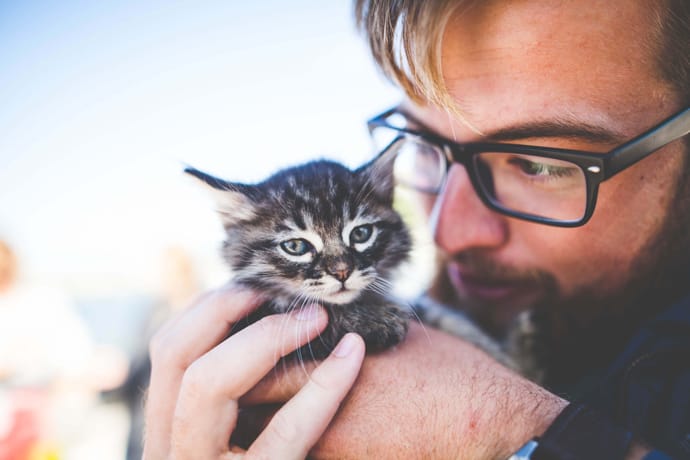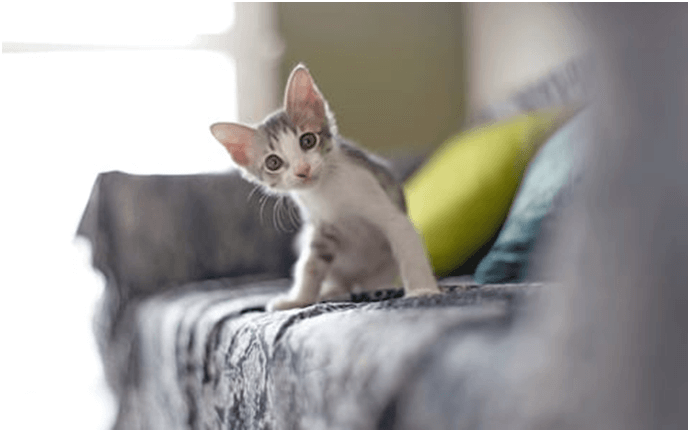Congratulations on your new puppy or kitten! Having just adopted a kitten myself about four months ago, I envy you (most) of the adventure ahead. Of course there will be times when you think, “Doesn’t he ever sleep? Doesn’t she ever stop moving?” The answer, actually, is not for about a year.
First of all you are strongly recommended to read this guide on basic kitten care tips before moving forward.
Before you bring your pup or kitty home, or as soon as possible if you’ve already brought her home, you will need some “stuff” to take care of your new pet. Remember, puppies and kittens are not dogs and cats, not for quite a while.
First off, puppies and kittens EAT. Our kitten, Sundance, eats so much we can pretty much bet that if he’s not standing on our laps or running under our feet, he’s eating. We can practically hear him growing, he’s getting bigger so fast.
For the first year, a puppy’s or kitten’s job is, pretty much, to eat, sleep and grow. They do this because when they evolved, in the wild, being small and cute was not a competitive advantage, and they needed to grow up, be strong, and defend themselves.

So, you’re going to need to have plenty of food. Remember that babies need baby food; don’t give the little ones adult food. They need specially formulated food for their growing bodies, to make sure they’re getting all the nutrients they need and not getting things they don’t need.
Just like human babies, feline and canine babies need toys, and a safe place to play. Playing is an important part of their emotional and physical development, just as it is for people babies, and having safe toys will keep your baby from getting into things he or she shouldn’t, or at least help.
Of course, no matter how many great toys you provide, they’ll always find something they’re not supposed to have. One day Sundance actually pulled a pushpin out of a bulleting board with his teeth. I caught him and put the bulletin board up higher, but it underscored for me the importance of kitten-proofing our home. And what if your kitten thinks that your dog is his own private toy? Read about how to properly introduce the kitten to your dog on PetDT.
Be sure you put electrical cords up out of reach or tape them down, don’t leave chemicals like cleaning solutions or antifreeze out where they could be tipped over and leak, don’t leave sharp objects around, and the like. Fortunately, unlike with people babies, you probably don’t have to secure the doorknob, but you do need to make sure your baby is safe at home.
Finally, you’ll need to housebreak or litter-box-train your pet, and you’ll need supplies for that.
If you have a puppy, a crate the correct size is the perfect training tool, because they love their crates, feel comfortable there, and also will not do their “business” in their sleeping area. By having a crate, using it when you can’t be with your dog and taking him directly outside after leaving his crate or eating, you can quickly teach him where the bathroom is.
Litter box training is similar, except that instead of putting the cat in a crate, you will take the cat to the litter box after meals, and he or she will quickly pick up on what’s supposed to happen there. Sundance was basically litter-trained when he came to live with us, and after a couple of times being shown the cat door and the litter box, he’s never had an accident in the house.
Being prepared before you bring your baby home can make the whole new parent process a lot easier, and is well worth the effort.

